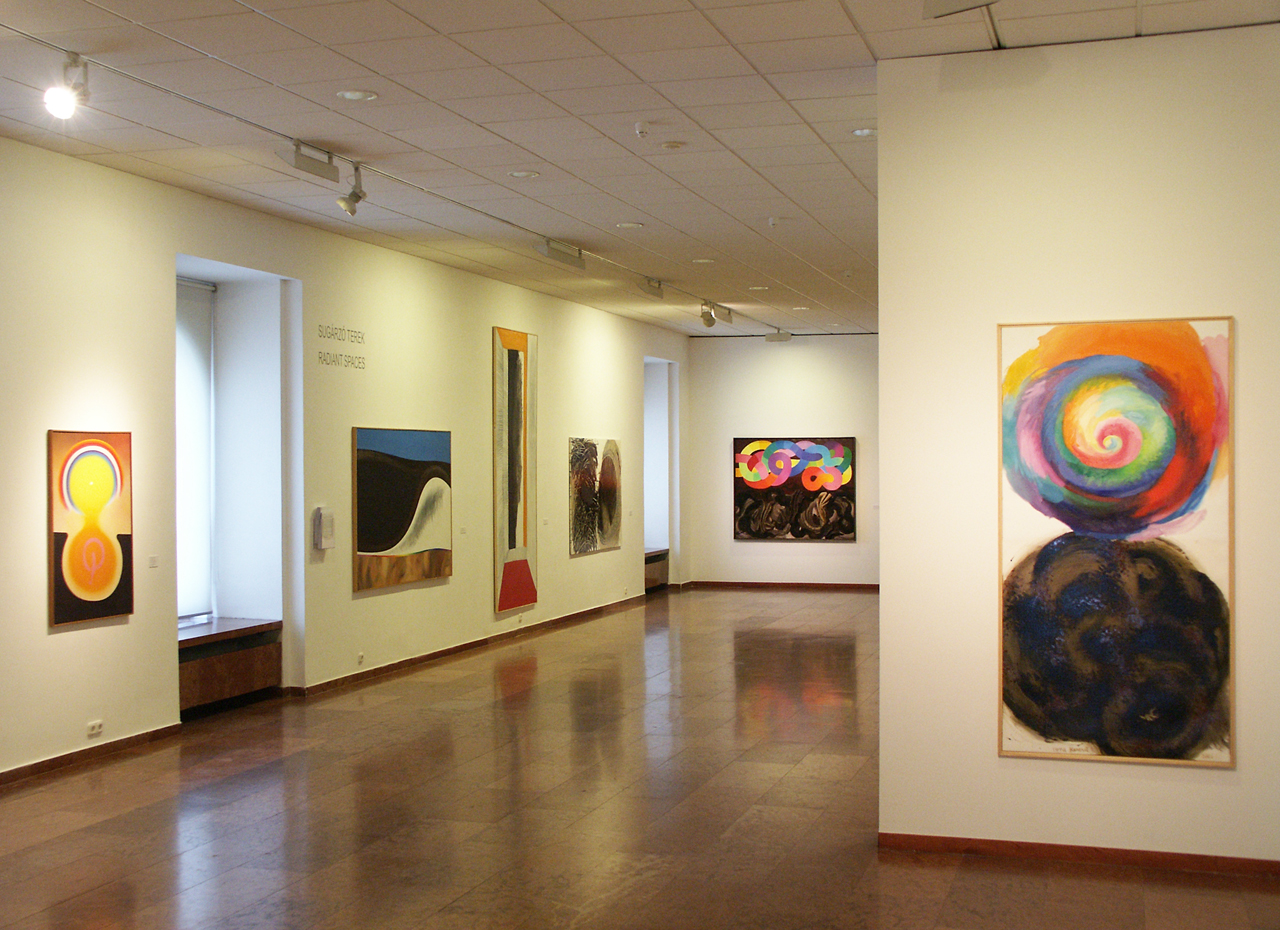An artistic career of nearly fifty years provides ample matter for an analytical approach. This wealth of output allows one to study the choice of materials and art forms, the goals and realised ideas, and to compare and contrast the oeuvre’s relationship to reality, vision, space, movement, colour, and light. Beyond this, as with many significant 20th-century painters, Ilona Keserü’s oeuvre also comprises a group of works with close links to the world of sounds: music. No less significant is Keserü’s body of theatrical work, with formations of space and figure, not yet seen in its entirety by the public. Ilona Keserü, or — to use the melodious name she has recently chosen — Ilona Keserü Ilona, studied to become a painter, initially as a pupil of Ferenc Martyn and subsequently at the Hungarian Academy of Fine Arts with, among others, István Szõnyi. A painter and a master of shaping large surfaces, she has also worked in three dimensions since the beginning of her career. Since her first reviews (e.g., Géza Perneczky, 1966) the description, a “rounded” world, has continued to apply to her works. Most of Ilona Keserü’s work is composed of such rounded forms, sometimes of a clear and settled character, sometimes of a passionate, “entangled” nature. Repeating certain colours and using textiles of varying degrees of fineness or coarseness, she reshapes individual patterns, such as a motif from a carved chest of Baranya or Zala County, or the heart-shaped form of old gravestones in the cemetery of a tiny village, Balatonudvari. Repetition, as in musical compositions, underpins the emphases and enhances the themes. The basic motifs in her work have been consistent for several decades. Their elaboration may be compared to the masterpieces described by the philosopher Plato, in his dialogue, Gorgias. Through the words of Socrates, Plato spoke of the painter, the builder, and the shipwright as the artist who disposes all things in order, and compels the one part to harmonize and accord with the other part, until he has constructed a regular and systematic whole. (Gorgias by Plato LIX., translated by Benjamin Jowet). Ilona Keserü’s painting had already been recognised in 1966 by Lajos Kassák at an exhibition in the Young Artists’ Studio. Kassák had referred to his first circle of writers, painters, and sculptors as “artisans” in the 1910’s. An analysis of the craftsmanship is one of the goals that the present retrospective intends to achieve. Additionally, however, the organisers, curators, and first of all the artist want to encourage a significant exploration into the messages of the drawings, paintings, sculptures, theatrical spaces, and installations. This exploration is done to reveal the joy, passion, and longing given by freshly found gestures, to discern the remarkable balance between artistic intuition and conscious awareness manifested in the repetitions of the “regular and systematic” harmonious whole. All this seems to recall the renderings of Baroque masters – as a young art critic, Andrea Máthé, has recently proposed in the critical review, Echo (Echo, Pécs, 1 March 2001): Spirituality, conceptuality and precision — the same features as are revealed in Baroque art — where material/textural quality and restless movement… provide the artworks’ significance and meaning and mould them into a whole. Many critics have already described Ilona Keserü’s art as one guided by womanhood. Its fundamental element is a metaphor of life-situations, that of approach, touch, and entanglement, as well as a state of continuity complying with the laws of nature, a state of stream. The exhibition title has sprung from these qualities, and the analysis will be made first by the artist and those who are putting together the exhibition, “disposing the artworks in order”, and subsequently by its interpreters and visitors. In addition to taking part in major international shows (The Olympiad of Modern Arts, Seoul, 1988; Das Offene Bild, Aspekte der Moderne in Europa nach 1945, Münster, 1992), Ilona Keserü has presented her works at solo exhibitions, including the Csepel Gallery, Budapest, in 1973; István Csók Gallery, Székesfehérvár, in 1978; the Mqcsarnok/Kunsthalle, Budapest, in 1983; City Gallery, GyQr, and Accademia d’Ungheria in Rome, both in 2001; and the Budapest MEO – House of Contemporary Arts in 2004. The present exhibition with its analytical approach is a unique undertaking by the Ludwig Museum Budapest – Museum of Contemporary Arts.




